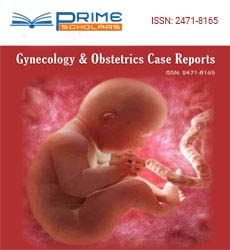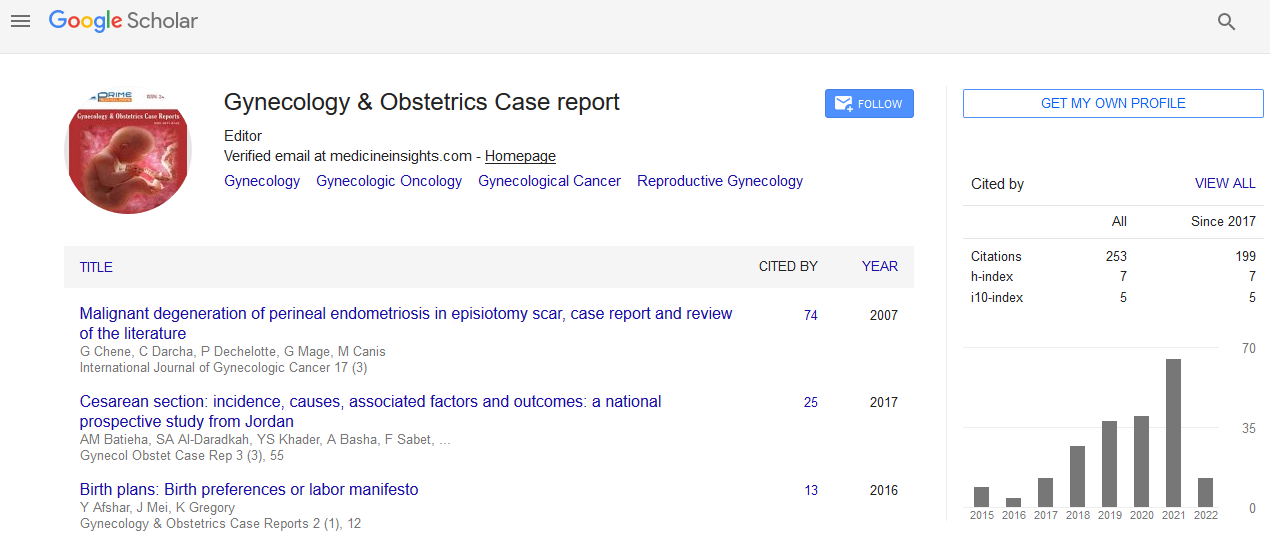Perspective - (2025) Volume 11, Issue 1
Diagnostic Challenges in Ovarian Cancer: A Review of Current Approaches and Future Prospects
Leano Nora*
1Department of Obstetrics & Gynecology, Aristotle University of Thessaloniki, 56429 Thessaloniki, Greece
*Correspondence:
Leano Nora, Department of Obstetrics & Gynecology, Aristotle University of Thessaloniki, 56429 Thessaloniki,
Greece,
Email:
Received: 27-Dec-2024, Manuscript No. ipgocr-25-22693;
Editor assigned: 30-Dec-2024, Pre QC No. ipgocr-25-22693(PQ);
, QC No. ipgocr-25-22693(QC);
Revised: 17-Jan-2025, Manuscript No. ipgocr-25-22693(R);
Published:
24-Jan-2025
INTRODUCTION
Ovarian cancer remains one of the most lethal gynecologic malignancies globally, primarily due to its asymptomatic nature in the early stages and the lack of effective early diagnostic tools. Despite significant advancements in cancer research and technology, the diagnosis of ovarian cancer continues to be a formidable challenge. This review aims to explore the existing diagnostic strategies, identify the limitations that hinder early detection and discuss future directions that may transform the diagnostic landscape [1]. The clinical presentation of ovarian cancer is often vague and non-specific, typically including symptoms such as abdominal bloating, pelvic discomfort, urinary urgency and early satiety. These symptoms overlap with numerous benign conditions, which contribute to the delay in diagnosis. As a result, approximately 70% of ovarian cancer cases are diagnosed at an advanced stage (Stage III or IV), where the prognosis is significantly poorer compared to early-stage detection. Early-stage ovarian cancer has a five-year survival rate exceeding 90%, underscoring the critical need for improved early diagnostic tools [2].
DESCRIPTION
Currently, the primary diagnostic modalities include pelvic examination, Transvaginal Ultrasound (TVUS) and serum biomarkers such as Cancer Antigen 125 (CA-125). While these tools play an important role in identifying suspicious masses, they suffer from limited sensitivity and specificity, particularly in early-stage disease. CA-125, the most widely used biomarker, can be elevated in a variety of benign conditions such as endometriosis, fibroids and pelvic inflammatory disease, reducing its utility as a standalone diagnostic tool. Furthermore, not all ovarian cancers result in elevated CA-125 levels, especially in early-stage or certain histological subtypes. Imaging techniques such as Computed Tomography (CT), Magnetic Resonance Imaging (MRI) and Positron Emission Tomography (PET) provide additional information on the extent and spread of the disease. However, these imaging modalities are more useful in staging and treatment planning rather than in initial diagnosis. Risk of malignancy indices (RMI), which combine CA-125 levels, menopausal status and ultrasound findings, have been developed to enhance diagnostic accuracy. Although these indices offer improvements, they still lack the precision needed for widespread screening purposes [3].
Due to the limitations of current methods, research efforts have increasingly turned toward molecular and genetic markers. Advances in genomics and proteomics have opened new avenues for identifying novel biomarkers that may offer greater sensitivity and specificity. Circulating Tumor DNA (ctDNA), microRNAs (miRNAs) and exosomal markers are among the promising candidates under investigation. These biomarkers have the potential to detect cancerous changes at a much earlier stage than traditional markers. However, these technologies remain largely in the experimental stage and require further validation in large, diverse populations before they can be integrated into routine clinical practice.
Another promising area of research is the application of Artificial Intelligence (AI) and Machine Learning (ML) in diagnostic imaging and data analysis. These technologies can analyze large datasets, including radiologic images and molecular profiles, to identify patterns indicative of early-stage disease. Preliminary studies have demonstrated the potential of AI-assisted imaging in improving diagnostic accuracy and reducing observer variability. As computational models become more sophisticated, they are expected to play an increasingly integral role in the diagnostic process [4]. Liquid biopsy is another frontier showing considerable promise. By analyzing non-solid biological tissue, primarily blood, for cancer-related genetic material, liquid biopsy offers a minimally invasive method for detecting ovarian cancer. Unlike traditional biopsies, liquid biopsies can be performed repeatedly, allowing for real-time monitoring of disease progression and response to therapy. The integration of this technique with next-generation sequencing could revolutionize early detection and personalized treatment strategies. Despite these advancements, several challenges must be addressed before these technologies can be widely adopted. These include standardization of protocols, cost-effectiveness and the need for longitudinal studies to assess clinical outcomes. Moreover, any new diagnostic tool must be carefully evaluated for its psychological and economic impact on patients, especially in the context of false positives and overdiagnosis [5].
CONCLUSION
The diagnosis of ovarian cancer remains a complex challenge that necessitates a multifaceted approach. While current diagnostic tools provide valuable information, their limitations underscore the need for more accurate, reliable and accessible methods. Ongoing research into molecular biomarkers, advanced imaging and AI-driven analytics holds great promise for the future. Early and accurate diagnosis is crucial for improving patient outcomes and with continued investment in research and innovation, the hope is that the grim statistics associated with ovarian cancer can be significantly improved in the coming years.
Conflict of Interest
None.
Acknowledgement
None.
REFERENCES
- Rijcken FE, Mourits MJ, Kleibeuker JH, Hollema H, van der Zee AG (2003) Gynecologic screening in hereditary nonpolyposis colorectal cancer. Gynecol Oncol 91(1):74-80.
Google Scholar Cross Ref Indexed at
- Makani S, Kim W, Gaba AR (2004) Struma Ovarii with a focus of papillary thyroid cancer: a case report and review of the literature. Gynecol Oncol 94(3):835-839.
Google Scholar Cross Ref Indexed at
- Ueland FR (2017) A perspective on ovarian cancer biomarkers: past, present and yet-to-come. Diagnostics 7(1):14.
Google Scholar Cross Ref Indexed at
- Hubbard HS (2001) Gynecologic examination of adolescents. Am J Nursing 101(3):24AAA.
Google Scholar
- Handa VL, Garrett E, Hendrix S, Gold E, Robbins J (2004) Progression and remission of pelvic organ prolapse: a longitudinal study of menopausal women. Am J Obstet Gynecol 190(1):27-32.
Google Scholar Cross Ref Indexed at
Citation: Nora L. (2025) Diagnostic Challenges in Ovarian Cancer: A Review of Current Approaches and Future Prospects.
Gynecol Obstet Case Rep. Vol.11 No.1:01.
Copyright: Copyright: © Nora L. This is an open-access article distributed under the terms of the Creative Commons Attribution License,
which permits unrestricted use, distribution and reproduction in any medium, provided the original author and source are
credited.

